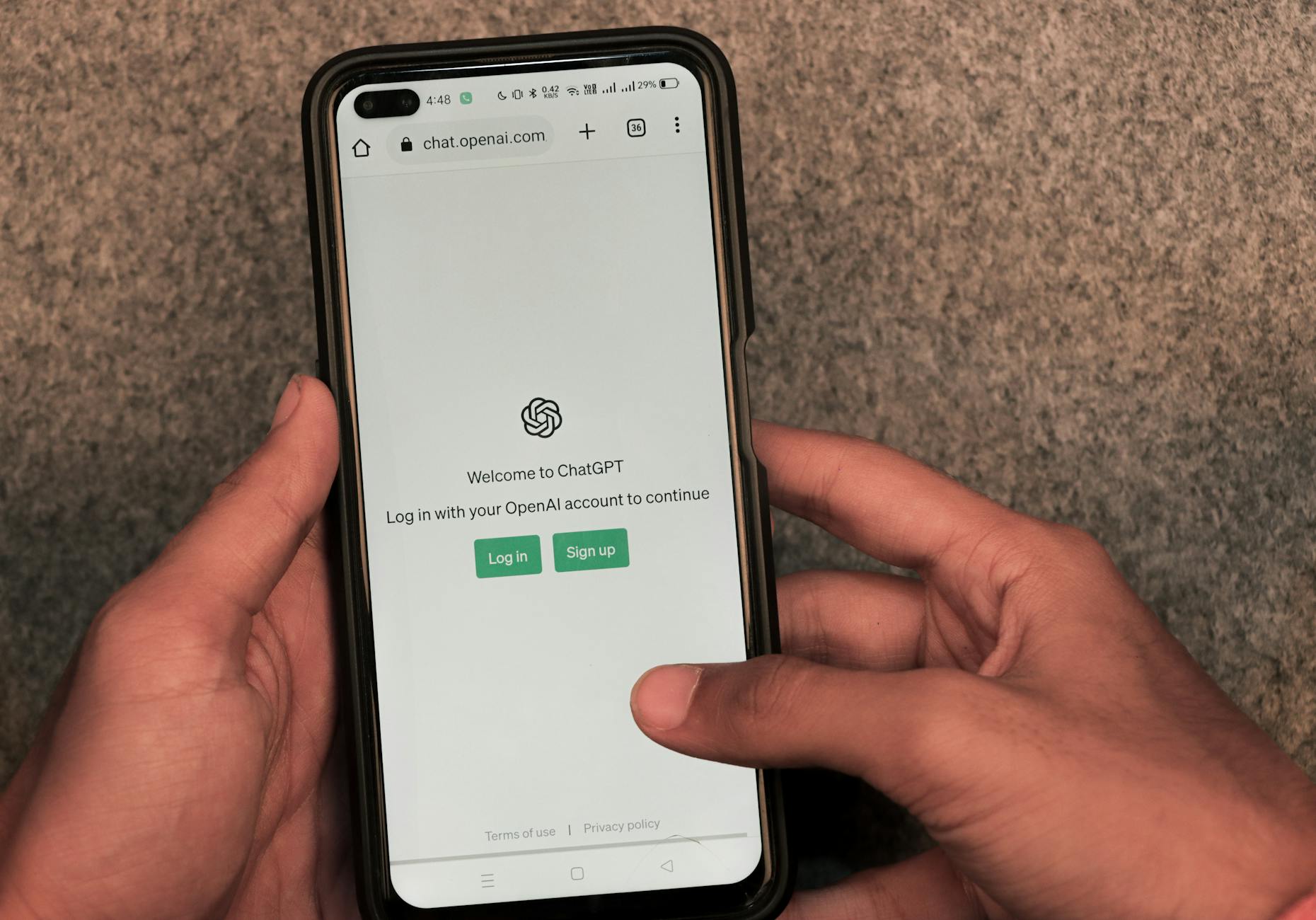Creating effective ChatGPT prompts is crucial for getting the best responses. Whether you’re using it for business, education, or entertainment, how you phrase your prompt can make a huge difference. A well-crafted prompt can guide ChatGPT towards a more relevant and accurate response. Think of it as giving directions to a driver; the clearer you are, the better the journey will be. This post will walk you through simple steps that enhance the quality of interactions with ChatGPT, ensuring you get the answers and insights you need. Let’s explore how to master the art of prompt crafting!
Understanding ChatGPT and Its Capabilities
As we dive into crafting prompts for ChatGPT, it’s essential to first grasp what ChatGPT is and how it functions. This knowledge will help you utilize this tool effectively, ensuring you get the most from your interactions. Let’s break it down step by step.
What is ChatGPT?
ChatGPT is a type of AI model developed by OpenAI that thrives on conversation, generating human-like text based on the input it receives. It’s built on a foundation of machine learning and natural language processing (NLP). Essentially, ChatGPT has been trained on a vast amount of text data so it can understand and produce text that resembles human conversation. This makes it incredibly useful for a variety of applications, such as customer support, content creation, and even education. For a detailed overview, check out the ChatGPT Capabilities Overview or explore more about its benefits on SOCO’s site.

Photo by Sanket Mishra
How ChatGPT Processes Prompts
When you ask ChatGPT a question or provide a prompt, it doesn’t just spit out a canned response. Instead, it processes the input through its neural network to determine the most probable answer based on the information it has learned. This involves a series of steps:
- Parsing: The model reads the input, understanding the context and any specific details.
- Contextual Learning: It draws from a vast pool of knowledge, aiming to match the prompt with the closest relevant data.
- Probability Calculations: Using sophisticated algorithms, ChatGPT calculates potential responses, selecting the one with the highest likelihood of accuracy and relevance.
For those interested in a deeper dive into how prompts work, consider exploring this guide or review discussions on prompt effectiveness like those found on StackExchange.
This processing ability ensures that each interaction is dynamic and tailored. Think of it like a highly experienced tour guide who knows just what to say to make your journey informative and enjoyable. Understanding this will provide a solid foundation as you move forward in crafting the perfect prompts.
Key Elements of Effective Prompts
Creating effective prompts for ChatGPT isn’t just about asking questions; it’s about asking the right ones. Let’s break down the essential components that make a prompt truly effective.
Clarity and Specificity
Why is being clear and specific important? When you ask ChatGPT something vague, you might get a response that’s off the mark. It’s like giving directions with half the street names missing. By being clear and specific, you guide the AI toward a more accurate response. This eliminates ambiguity and aligns the reply closer to what you desire. According to a Medium article on specificity in writing prompts, clarity ensures the AI doesn’t “guess” what you mean but directly responds to your precise request.

Photo by KoolShooters
Providing Context
Context is like giving the backstory to a movie; it sets the scene. Without it, ChatGPT might provide an answer that doesn’t quite fit the scenario you’re thinking of. Anytime you’re setting up a prompt, give a bit of background. This helps the AI understand the “why” behind your question and tailor its responses accordingly. For an in-depth look, check out the Guide on Effective Prompts from Forbes.
Defining the Desired Outcome
The clearer you can express what you want from the interaction, the better. Do you want a list of facts, a creative story, or a straightforward answer? By defining this outcome, you help ChatGPT align its processing to deliver precisely what you expect. It’s akin to setting a goal before starting a project.
Tone and Style Directions
Imagine explaining something in a formal report vs. a casual chat with friends. The tone and style matter. By specifying how you’d like the response styled—be it formal, humorous, or even poetic—you ensure the interaction fits your needs. This Coursera guide highlights the importance of tailoring language to your audience.
Setting Character Roles
Assigning roles isn’t just fun, it’s functional. Want ChatGPT to answer as a tech expert or maybe a historical figure? Setting roles gives the responses a more personalized touch, enhancing engagement and making the conversation more dynamic. This strategy is one of the 6 ways to write better ChatGPT prompts explored by ZDNet.
Incorporating these elements into your prompts can transform how you interact with ChatGPT, leading to more tailored and useful responses. By considering clarity, context, desired outcomes, tone, and role settings, you establish a strong foundation for effective communication.
Advanced Prompting Techniques
Mastering ChatGPT goes beyond just asking questions—it’s about understanding and using advanced techniques to maximize the quality and depth of responses. When you’re crafting prompts, think of yourself as an artist with a paintbrush; each stroke or prompt shapes the picture or conversation.
Using Examples and Templates
Using examples and templates when crafting prompts isn’t just helpful—it’s essential. Think of it like following a trusted recipe; it guarantees a desired outcome. When you provide a clear example, you’re giving ChatGPT a context to latch onto, ensuring the responses align more closely with your expectations. Templates act as a reusable structure, offering a familiar path for the AI to follow, reducing ambiguity and increasing precision in responses. This approach is echoed in the Comprehensive List of Advanced ChatGPT Prompting Techniques.
Iterative Prompting
Imagine sculpting clay. Each pass refines the shape, making it closer to your vision. Iterative prompting is similar; it involves refining prompts based on previous outputs to hone in on the most accurate response. Each response can be analyzed, prompting adjustments to your next question or directive, gradually enhancing the interaction. For insights on how to implement this technique effectively, explore the 7 Advanced ChatGPT Prompt-Writing Tips.
Creating a Prompt Library
A prompt library is like a tool shed for prompters. By building a collection of effective prompts, you arm yourself with tried-and-tested directives ready to deploy in various situations. This collection serves not only to save you time but also to ensure consistent quality in your engagements with ChatGPT. Such libraries can be dynamic, adapting and growing with new inputs and refined prompts. Consider looking into resources like Effective Prompts for AI: The Essentials to get started.
Asking Follow-Up Questions
Asking ChatGPT follow-up questions can transform a static exchange into a dynamic, evolving dialogue. By encouraging the AI to ask questions, you invite deeper exploration of topics. It’s like having a conversation with an old friend, where the back-and-forth enriches understanding and uncovers nuances. Engaging with ChatGPT in this way can be a game changer in exploring complex subjects or clarifying details. The art of asking the right questions is highlighted in How to Craft the Perfect ChatGPT Prompt.

Photo by Izaz Ali
These techniques collectively serve as the advanced toolkit for any ChatGPT user aiming to extract the deepest, most relevant insights from AI conversations. Implementing them can elevate your interactions from ordinary to extraordinary, crafting experiences that are as engaging as they are informative.
Common Mistakes to Avoid
Crafting an effective ChatGPT prompt is crucial for getting accurate and relevant feedback. Like playing chess, every move or word matters. Missteps can easily derail the conversation with vague outputs. Let’s look at some of the common mistakes to steer clear of to ensure a smooth interaction.
Being Too Vague

Photo by Elviss Railijs Bitāns
Being vague in your prompts is like trying to find a needle in a haystack. It complicates things for ChatGPT, leading to unclear or irrelevant responses. Why say “Tell me about cars” when you could ask for the “latest advancements in electric vehicle technology”? Unfortunately, many users fall into this trap, which is highlighted in this FSU Service Center article. Clear and concise prompts are your best tool for success.
Overloading Information
Have you ever gotten a complicated instruction sheet and just felt lost? That’s what it’s like for ChatGPT when faced with information overload. When prompts are bogged down with excessive details, it becomes difficult for the AI to prioritize what’s essential. It’s better to focus on the main question and add only the core details necessary for context.
- Keep it brief.
- Focus on the main point.
- Avoid tangential information that may distract.
By streamlining your queries, you set the stage for more precise responses.
Neglecting Tone and Style
Tone and style are the seasoning of your conversation. Ignoring them is like serving bland food—still edible, but much less enjoyable. Set the tone at the outset, whether you want a professional answer or something more relaxed and conversational. This will ensure the response fits your expectations and maintains consistency across interactions.
These pitfalls might seem small, but they can significantly impact your ChatGPT experience. Avoiding them will streamline your communication and harness the full potential of AI. For a more detailed guide on crafting perfect prompts, explore this Coursera article.
Conclusion
Crafting effective ChatGPT prompts is like unlocking a powerful tool. By being clear and providing context, you get precise, helpful responses. Don’t shy away from experimenting with tone and desired outcomes to shape conversations to your needs.
Why settle when you can refine and improve? Try different approaches and see what works best for you. Your nuanced understanding will transform your interactions.
Jump into the conversation—experiment, adapt, and enhance your prompts. Share your discoveries and see how this approach can revolutionize your AI experiences.


